
The Sacred Heart of Makkah: Kaaba
Discover the Kaaba in Makkah, the holiest site in Islam, where millions gather for prayer and reflection in a profound spiritual experience.
The Kaaba, located in the heart of Makkah, is the most sacred site in Islam and a must-visit for any pilgrim or traveler. Its stunning architecture and profound spiritual significance draw millions of visitors each year, especially during the Hajj pilgrimage. As you stand before this iconic structure, the sense of history and devotion is palpable, making it a profound experience for everyone.
A brief summary to Kaaba
- Makkah, Al Haram, SA
Local tips
- Visit during non-peak hours to avoid large crowds and enjoy a more peaceful experience.
- Dress modestly and respectfully to honor the sanctity of the site.
- Stay hydrated, especially if visiting during warmer months, as the area can get quite hot.
- Be prepared for security checks; arrive with ample time to clear through them.
Getting There
-
Car Rental
If you're renting a car in Najd, start your journey by heading west on Route 80M. Follow signs for Makkah, which is approximately 8 hours away by car. Once you reach Makkah, follow the signs to Al Haram district. The exact address is Al Haram, Makkah 24231. Parking is available near the Haram, but expect to pay a fee of about 20-30 SAR for parking.
-
Public Bus
From major cities in Najd like Riyadh or Buraydah, you can take a public bus to Makkah. Buses are available from the central bus stations and the ticket prices range from 50-100 SAR depending on your departure city. Upon arrival at Makkah's bus station, you can take a taxi or a local bus to Al Haram, which will cost about 10-15 SAR.
-
Taxi or Ride-Hailing Services
If you prefer a more direct route, consider using a taxi or a ride-hailing service such as Uber or Careem. Simply input 'Al Haram, Makkah 24231' as your destination. The fare will vary depending on your starting point, but expect to pay approximately 200-300 SAR from central Najd locations.
-
Train
If you are near Riyadh, you can take a train to Makkah. The Saudi Railways operates services from Riyadh to Makkah, and tickets cost around 150-200 SAR. Upon arrival at Makkah train station, take a taxi or local bus to Al Haram, costing around 10-15 SAR.
Discover more about Kaaba
Iconic landmarks you can’t miss
Al Kaaba
0.0 km
Discover the spiritual heart of Islam at Al Kaaba in Makkah, where millions gather for worship and reflection in a breathtaking sacred space.
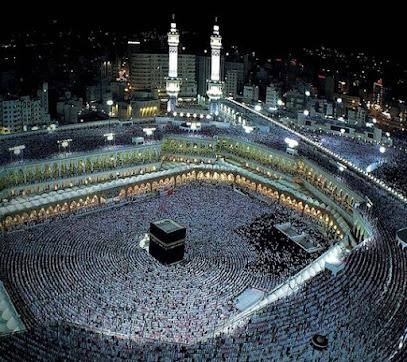
شِعب أبي طالب
0.2 km
Explore Shaib Abu Talib in Makkah, a revered religious destination rich in Islamic history and spirituality, where faith and heritage intertwine.

Makkah Clock Tower
0.4 km
Discover the architectural wonder of Makkah Clock Tower, a luxury destination offering shopping, dining, and breathtaking views of the holy city.

جبل أبي قبيس
0.4 km
Discover the historical significance and breathtaking views of Mount Abu Qubais, a sacred landmark in Makkah steeped in Islamic heritage.

Makkah Al Mukarramah Library
0.5 km
Explore Makkah Al Mukarramah Library, a cultural gem offering a vast collection of literature and a serene environment for reading and reflection.

Makkah Clock Royal Tower A Fairmont Hotel
0.5 km
Discover the elegance and serenity of Makkah Clock Royal Tower, where luxury meets spirituality in the heart of the holy city.

Al-Shubaika Cemetery
0.5 km
Explore the serene Al-Shubaika Cemetery in Makkah, a historic site rich in Islamic heritage and spiritual significance, perfect for reflective journeys.
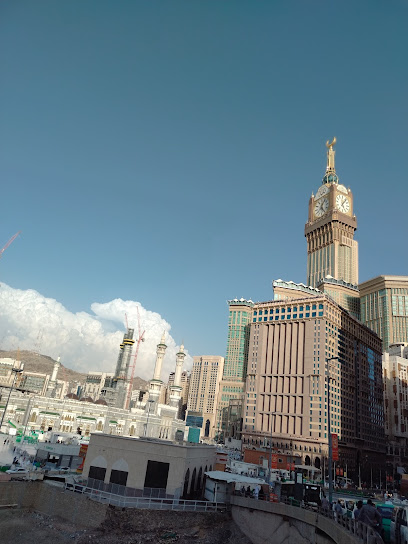
King Abdullah Center for Crescent Observation and Astronomy
0.5 km
Explore the wonders of the universe at King Abdullah Center for Crescent Observation and Astronomy in Makkah, where science meets spirituality.

Abu Qubais Hill
0.6 km
Discover Abu Qubais Hill, an iconic historical landmark in Makkah offering breathtaking views and a deep connection to Islamic heritage.

Jabale Abu khubais
0.6 km
Explore the historical significance of Jabale Abu Khubais, a landmark offering stunning views and deep cultural insights in the heart of Makkah.

Shib-e-Abi Talib
0.6 km
Explore the historical significance of Shib-e-Abi Talib, a key landmark in Makkah that highlights the rich cultural heritage of the region.

Akbar's talise OTW makkah
0.7 km
Experience the spiritual serenity of Akbar's Talise in Makkah, where architecture meets devotion in a breathtaking setting.

Pigeon Square
0.8 km
Discover the enchanting Pigeon Square in Makkah, a cultural hub where vibrant community life and unique experiences await every visitor.

Masjid e Shajarah: Where from the tree start walking to Hazrat Muhammad sallallahu alaihi wasallam.
1.0 km
Explore the sacred Masjid e Shajarah in Makkah, a historic mosque marking the miraculous journey of the Prophet Muhammad (saw) and a site for spiritual reflection.

Masjid al Shajarah @ Al Hujun
1.1 km
Experience tranquility and spiritual reflection at Masjid al Shajarah, a hidden gem in Al Hujun, Makkah, embodying Islamic architecture and community spirit.
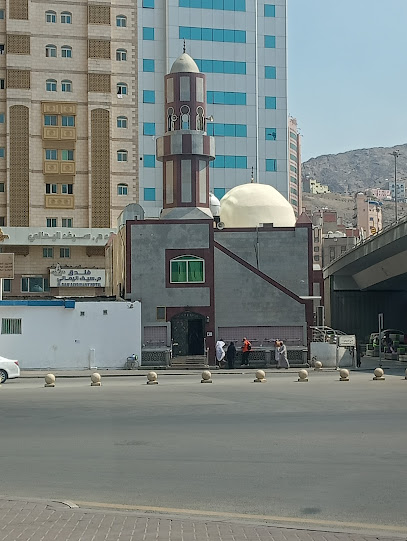
Unmissable attractions to see
Kaaba
0.0 km
Discover the Kaaba, the sacred heart of Makkah, where millions unite in spiritual devotion and profound cultural heritage.
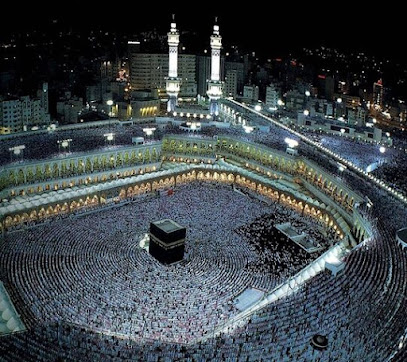
Maqaam-e-ibrahim
0.0 km
Explore Maqaam-e-Ibrahim, a sacred site in Makkah showcasing the footprints of Prophet Ibrahim and a testament to deep faith and spirituality.

Zamzam Well
0.0 km
Explore the Zamzam Well in Makkah: A historical and spiritual landmark for millions of pilgrims seeking divine blessings.

Safaa and Marwah (Saee)
0.1 km
Explore the sacred hills of Safaa and Marwah, where faith and tradition converge in the heart of Makkah's pilgrimage experience.

Safa and Marwa (Saee)
0.2 km
Experience the profound journey of faith at Safa and Marwa, a significant pilgrimage site in Makkah steeped in Islamic tradition.

The Clock Towers
0.4 km
Experience the grandeur of Makkah's Clock Towers, a majestic blend of luxury and spirituality in the heart of the holy city.

ساحة الحمام
0.4 km
Discover the tranquil beauty of Al Hammam Square in Makkah, a spiritual haven for pilgrims and tourists amidst the bustling city.

ساحة الحمام
0.4 km
Experience the spiritual tranquility of Al-Hamam Square in Makkah, a serene spot for reflection amidst the city's rich cultural heritage.

Massage Chairs
0.4 km
Unwind and rejuvenate in Makkah's massage chair haven; a perfect retreat for tired travelers amidst the city's spiritual bustle.

Drop location
0.5 km
Experience the rich culture and breathtaking landscapes of Ash Shubaikah, a captivating destination in Makkah for all travelers.
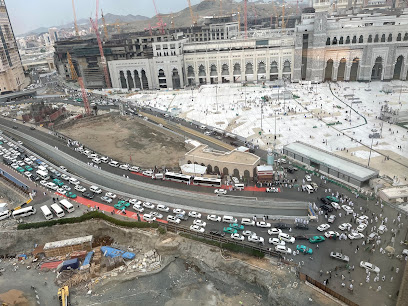
Clock Tower Museum
0.5 km
Explore the fascinating Clock Tower Museum in Makkah, where technology meets culture in a stunning architectural experience.

Kabutor Chowk ( Pigeon Square )
0.6 km
Experience the vibrant atmosphere of Kabutor Chowk, Makkah's Pigeon Square, a serene spot for relaxation, culture, and unforgettable memories.

هلال برج الساعة
0.6 km
Discover the stunning Al Hilal Clock Tower in Makkah, a symbol of architectural beauty and cultural significance in the heart of Islam.

هلال برج الساعة
0.6 km
Discover the architectural beauty and cultural significance of Hilal Tower, a key tourist attraction in the heart of Makkah, Saudi Arabia.

Pigeon Gathering Area
0.7 km
Experience tranquility at the Pigeon Gathering Area in Makkah, where nature and spirituality converge for an unforgettable journey.

Essential places to dine
Al Shorfa Restaurant
0.3 km
Experience authentic Saudi flavors at Al Shorfa Restaurant in Makkah - where tradition meets modern culinary artistry.

AL QASR
0.3 km
Discover Al Qasr in Makkah - where exquisite dining meets rich cultural experiences.

Paradise restaurant / shawerma
0.3 km
Discover the delicious shawarma and authentic Middle Eastern flavors at Paradise Restaurant in Makkah's vibrant Alsafwa Food Court.

Al Bayt Restaurant
0.3 km
Discover authentic Saudi Arabian cuisine blended with international flavors at Al Bayt Restaurant in Makkah's vibrant dining scene.
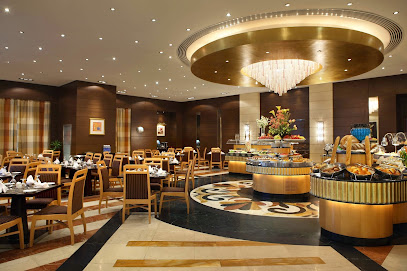
مطاعم عاشور
0.4 km
Experience authentic Saudi cuisine at مطاعم عاشور in Makkah - where tradition meets flavor in every dish.

Al Andalus Restaurant
0.4 km
Discover exquisite Middle Eastern cuisine at Al Andalus Restaurant in Makkah, where tradition meets modern dining in an inviting atmosphere.

Al Dyafa Restaurant
0.4 km
Discover the rich flavors of Saudi Arabian cuisine at Al Dyafa Restaurant in Makkah – where tradition meets modern dining.

Al Fayhaa Restaurant
0.4 km
Experience authentic Middle Eastern cuisine at Al Fayhaa Restaurant in Makkah – where flavors meet tradition in a warm atmosphere.

Shawarma city
0.4 km
Discover the authentic taste of shawarma at Shawarma City in Makkah – where every bite tells a story.
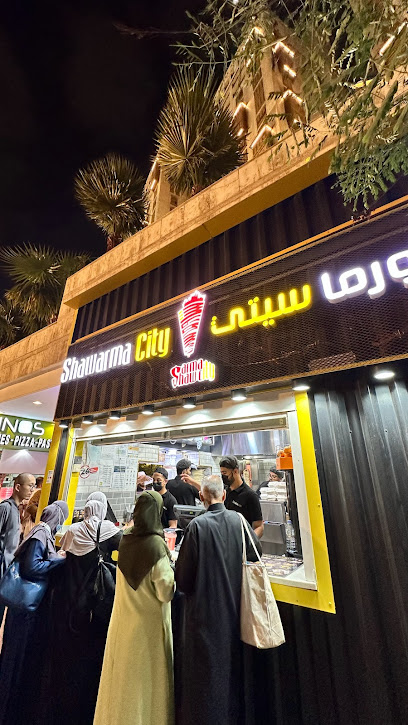
Taste palace Resturant
0.4 km
Experience authentic Saudi cuisine at Taste Palace Restaurant in Makkah, where tradition meets flavor in a welcoming atmosphere.
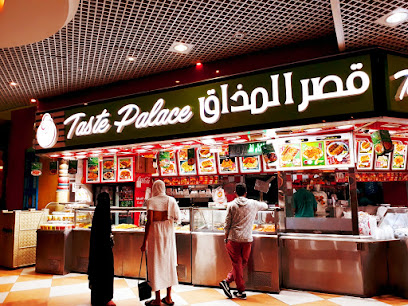
Firdous Restaurant
0.4 km
Experience authentic Middle Eastern cuisine at Firdous Restaurant in Makkah - where tradition meets flavor.

Mecca Safwa Restaurant 3Floor
0.4 km
Experience authentic Saudi cuisine at Mecca Safwa Restaurant - where tradition meets taste in the heart of Makkah.

Al Ruwad
0.4 km
Experience exquisite dining at Al Ruwad in Makkah, where traditional flavors meet modern elegance in an unforgettable setting.

Tuheed Pakistani Restaurant
0.4 km
Experience authentic Pakistani flavors at Tuheed Restaurant in Makkah's Clock Tower – a culinary haven for every traveler.

Al Firdaous Restaurant
0.4 km
Discover Al Firdaous Restaurant: A luxurious buffet experience in Makkah featuring diverse flavors from Middle Eastern to international cuisine.

Markets, malls and hidden boutiques
معرض الحلوة Alhelwah Boutique
0.3 km
Explore Alhelwah Boutique in Makkah for a unique shopping experience, featuring a blend of modern fashion and traditional attire.

Al HIKMA C60
0.3 km
Discover the essence of Makkah at Al HIKMA C60, your go-to gift shop for unique souvenirs and traditional crafts.

Hullat.T
0.3 km
Discover unique souvenirs and traditional crafts at Hullat.T, a premier gift shop in the heart of Makkah's Diamond Tower.

Nusuki | نسكي
0.3 km
Explore Nusuki Gift Shop in Makkah for unique souvenirs, traditional handicrafts, and a memorable shopping experience in the heart of the holy city.

QUBA DATES
0.3 km
Discover the essence of Makkah at QUBA DATES, a shopping mall offering exquisite dates and local handicrafts for tourists seeking authentic experiences.

Mecca Commercial Housing Center
0.3 km
Explore the Mecca Commercial Housing Center: a vibrant shopping mall blending tradition with modern retail in the heart of Makkah.
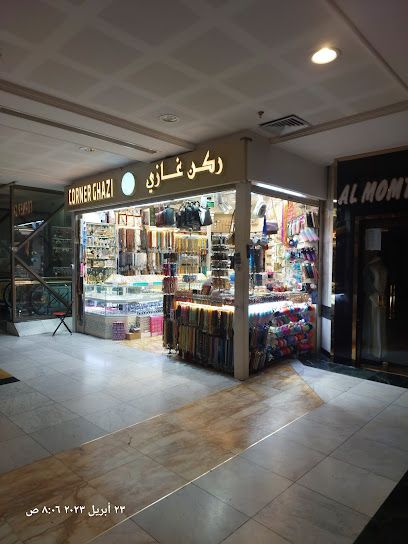
بيت الكشمير Kashmirhouse
0.3 km
Explore the rich heritage of Makkah at بيت الكشمير Kashmirhouse, offering exquisite rugs, unique antiques, and stunning paintings.

Al Marwa Shop
0.3 km
Discover unique treasures and meaningful souvenirs at Al Marwa Shop in Makkah, the perfect stop for memorable gifts and local crafts.

Alkhlij Corner
0.3 km
Discover unique souvenirs and traditional crafts at Alkhlij Corner in Makkah's vibrant Al Haram district.

Gazzaz - Makkah Al Haram
0.4 km
Discover the essence of Makkah at Gazzaz - your destination for unique gifts and exquisite perfumes that embody Arabian culture.

Al Haramain Perfumes
0.4 km
Explore exquisite fragrances at Al Haramain Perfumes in Makkah, a treasure trove of scents reflecting rich Arabian heritage and craftsmanship.

مكتبةسراج
0.4 km
Explore مكتبةسراج in Makkah for unique gifts and authentic souvenirs that showcase the rich Islamic culture and traditions.

بريق
0.4 km
Discover the ultimate gift shop in Makkah - بريق offers a stunning selection of unique souvenirs and local treasures for every traveler.

بريسم
0.4 km
Explore بريسم, a hidden gem in Makkah offering unique gifts and authentic souvenirs that embody the spirit of the city.

New bazar
0.4 km
Discover unique souvenirs and traditional crafts at New Bazar, a vibrant gift shop in the heart of Makkah, reflecting the rich culture of Saudi Arabia.

Essential bars & hidden hideouts
Lounge 99
0.3 km
Savor delicious pizzas at Lounge 99, a cozy takeout venue in Makkah offering a delightful dining experience.

Raffles Makkah Palace
0.3 km
Discover luxury and spirituality at Raffles Makkah Palace, a five-star hotel offering exquisite dining and stunning views near the sacred Masjid Al Haram.

Farfalle
0.4 km
Discover the culinary delights of Farfalle in Makkah, where traditional flavors meet modern dining in a vibrant atmosphere.

Swissôtel Hotel Makkah
0.4 km
Stay at Swissôtel Hotel Makkah for luxurious comfort and breathtaking views of the Holy Kaaba, just steps away from Masjid al-Haram.

AL DIRA
0.4 km
Experience the essence of Makkah at Al Dira, where every meal is a journey through rich Middle Eastern flavors in a welcoming atmosphere.

ATYAF
0.5 km
Experience the flavors of Middle Eastern cuisine at ATYAF, the premier dining destination in Makkah, right next to Al Haram.
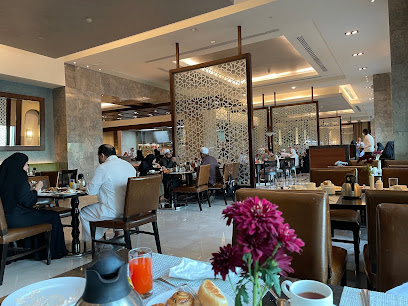
Makkah Room
1.1 km
Experience the rich flavors of Makkah at Makkah Room, where traditional Saudi cuisine meets modern culinary excellence.

Sugarcane & Juices
1.2 km
Discover the refreshing taste of Makkah at Sugarcane & Juices, where vibrant drinks and a lively atmosphere await every visitor.

صالة درجة الأعمال بمحطة قطار الحرمين السريع
3.9 km
Experience unparalleled comfort and elegance at the Business Lounge of Haramain High-Speed Train Station, a perfect retreat for travelers in Makkah.

Elanor restaurant مطعم ايلانور
4.3 km
Discover the flavors of tradition and modernity at Elanor Restaurant in Makkah, where every meal is a celebration of culinary excellence.

Vitamin Palace | قصر الفيتامين
6.0 km
Explore the flavors of Makkah at Vitamin Palace, a family-friendly restaurant offering delicious chicken, shawarma, and refreshing juices.
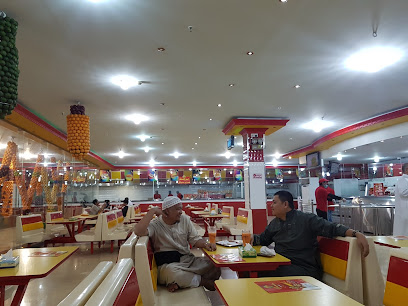
Bbq tonight punjab
6.1 km
Experience the vibrant flavors of Punjabi cuisine at BBQ Tonight Punjab, a family-friendly restaurant in Makkah, perfect for all food lovers.

Lounge Lobby Cafe
6.6 km
Discover tranquility at Lounge Lobby Cafe in Makkah, where delicious refreshments meet inviting ambiance amidst vibrant city life.

النسيم سكوير Alnaseem Square
8.3 km
Discover Alnaseem Square in Makkah: A vibrant food court offering diverse dining options and a cozy atmosphere for every palate.

بافلو وينجز آند رينجز | Buffalo Wings & Rings
8.4 km
Savor the Best Chicken Wings in Makkah at Buffalo Wings & Rings - A Flavorful Experience Awaits!




